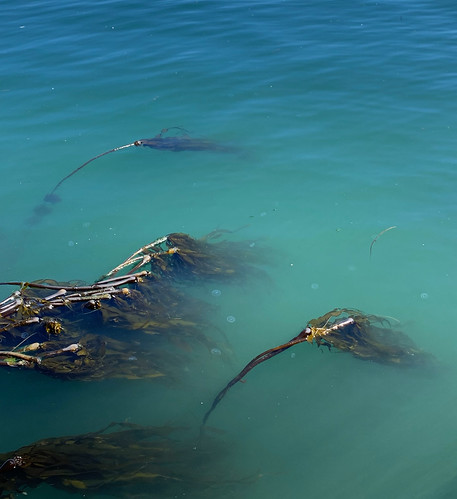Well, I guess this is it…
It’s hard to believe this is the end of my fellowship. It all happened so quickly, but I am extremely grateful for the experience, opportunities, and friendships made in the process. Since this project will take several years to complete, I am satisfied with the progress we have made so far. Overall, Oregon and Washington are closer to Geographic Location Descriptions (GLDs) for seabed mining, seafood processing discharge, and offshore aquaculture. While some are closer than others, I believe each coastal program is equipped with the tools necessary to finish the product. We also were able to complete a Guidance Document for other Coastal Programs who wish to pursue GLDs in the future.
Geographic Location Descriptions are one of the many tools available to Coastal Programs, including the Oregon and Washington Coastal Management Programs. These documents allow the Coastal Program to review activities outside of the coastal zone for reasonably foreseeable effects to coastal resources. These resources span from recreation and tourism, to fishing practices in state waters. Each of these uses/resources must be balanced with the authorization of an activity in federal waters that is shown to have those effects.
Seabed Mining
Seabed mining is something most Coastal Programs should plan for, as it is likely to become an emerging use in the future. Scientists have estimated that it is only a matter of time before mining activities shift their focus on the mineral resources found in the ocean. As technology evolves, and the resources found on land become more finite, it can be inferred that seabed mining will be an emerging use. To best prepare for these activities and the reasonably foreseeable effects to coastal resources, both Oregon and Washinton have begun to prepare a GLD for offshore seabed mining. This GLD will ensure each Coastal Program has a seat at the table, as it coordinates with the relevant federal agencies. Under the Coastal Zone Management Act, and its implementing regulations, federal agencies are tasked with coordinating with State Coastal Management Programs to ensure that those federal actions are consistent with enforceable policies located in the coastal zone. In this case, there still needs to be more information known about the technology, but the reasonably foreseeable effects are well delineated. Some of these effects include permanent changes to benthic habitat, water quality degradation, and other natural resource management concerns. This work has been critical to each Coastal Program as they find more information, so much so, that the Washington State Legislature and Governor placed a moratorium on seabed mining activities in the coastal zone. This moratorium is encouraged because it has been put in place before political concerns are taken into account.
Offshore Aquaculture
As of today, the US has remained focused on developing aquaculture facilities in both the nearshore and offshore. The main goal is to decrease the amount of imported seafood that the US relies upon each year. For this reason, the federal government has remained focused on siting facilities in US waters every four years. A GLD will ensure that concerns for natural resources will be discussed prior to authorization. Some of these things include excess nutrient
input, HABs, OAH, competition with the fishing industry, and other relevant/valid issues with an offshore aquaculture facility. The three main types of aquaculture were considered in developing the analysis of reasonably foreseeable effects of aquaculture siting on natural resources. The three main types of aquaculture are: finfish, marine vegetation, and shellfish. Each of these types of aquaculture have impacts to coastal resources and uses, so the Coastal Program remains focused on coordinating with the relevant agencies on developing the framework for siting these facilities in the future. These impacts will be helpful in starting the conversation, in the same way the BOEM Wind Energy Task Force uses the information in the Marine Renewable GLD to determine what the reasonably foreseeable effects could be.
Offshore Seafood Processing Discharge
This is probably the activity I spent the most time on. Starting in 2015, the State of Oregon and the EPA began coordinating on a permit for offshore seafood processing discharge on the Oregon and Washington continental shelves. Unfortunately, the two agencies were unable to reach an agreement on the coastal effects of the authorization of the activity. One of the primary points of disagreement was that each agency needed to know a lot more information about the oceanographic currents, where the material is going, what the respiration rate is of the material, etc. During my fellowship, I was able to bring this permit to the EPA’s enforcement division along with creating a coordination process with the Quileute Tribe, Quinault Tribe, the State of Washington, the State of Oregon, and the EPA. This coordination group meets quarterly to discuss the complexities of permit enforcement and how to ensure the reporting information can be used to inform the next iteration of the permit in 2024.
GLD Guidance Document
Due to the gray area involved in drafting GLDs, I was able to help draft a Guidance Document for GLDs. This document discusses the complexities that come with undertaking these projects, especially when the technology is so new. For example, seabed mining is not a practice in the US, so it is difficult to ascertain the types of impacts to key coastal resources without further research. This document should be in publication within the next year.
Final Note
This has been a fantastic opportunity, and I wouldn’t trade it for the world. I feel better equipped to take on a career in coastal management, and am incredibly excited to see what’s next. In the meantime, I was able to participate in a podcast with Felicia Olmeta-Schult to discuss lessons learned from my fellowship, and other information about coastal management.



